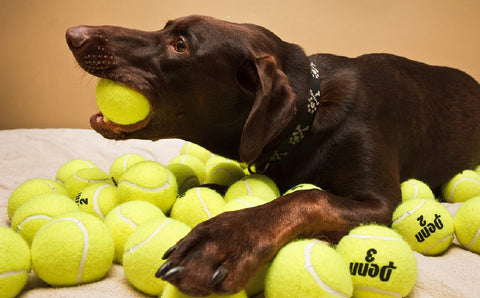Potty training a puppy can be a challenging but essential aspect of dog ownership. While there are various methods to achieve this, it's crucial to find an approach that aligns with your dog's behavior and your preferences. Remember that when you’re potty training, you have two major goals – the first is to show your puppy where you want them to potty. This is simply patterning a bheavior – “potty here”. The second thing we want to accomplish is for your puppy to become accustomed to dealing with bladder pressure. In this blog, we'll explore a practical approach to potty training that focuses on understanding your puppy's instincts and using effective training techniques.
Understanding Your Puppy's Behavior:
Before diving into the training methods, it's vital to comprehend your puppy's natural instincts. Dogs are den animals, which means they have an inherent desire to keep their living area clean. This instinct can be harnessed to facilitate potty training.
Establish a Routine:
Consistency is key to successful potty training. Create a regular schedule for your puppy that includes worktime, mealtimes, playtime, and potty breaks. Puppies typically need to eliminate after waking up, eating, and playing. Take your puppy outside during these times to give them the opportunity to do their business.
Choose a Designated Potty Area:
Select a specific spot in your yard or outdoor area for your puppy to use as their bathroom. This consistent location will help reinforce the idea that this is where they should go. Always lead your puppy to this spot during potty breaks.
Use Verbal Cues:
While some training methods rely heavily on positive reinforcement, you can still use verbal cues without necessarily being a positive reinforcement trainer. When your puppy begins to eliminate in the designated area, use a simple phrase like "go potty" or "do your business." Over time, your puppy will associate this command with the act of eliminating.
Monitor and Supervise:
Keep a close eye on your puppy when they are indoors, especially during the early stages of training. If you notice any signs that they need to go, such as sniffing or circling, immediately take them outside to the designated potty area.
Cleaning Up Accidents:
Accidents are bound to happen during the potty-training process. When they do, clean the area thoroughly to remove any lingering odors. Dogs have a keen sense of smell, and if they can still detect the scent of their previous accidents, they may be more likely to eliminate in that area again.
Be Patient and Avoid Punishment:
Potty training can be frustrating at times, but it's essential to remain patient and avoid punishment. Yelling or scolding your puppy for accidents can create fear and anxiety, which hinders the training process. Instead, focus on positive verbal cues and rewards that work for you.
Gradual Freedom:
As your puppy begins to show consistent success with potty training, gradually give them more freedom in the house. Start by allowing them into one room at a time and expand their access as they demonstrate reliability.
Potty training a puppy requires patience, consistency, and an understanding of your dog's natural instincts. While you may not prefer positive reinforcement training methods, the principles discussed here can help you successfully potty train your puppy. Remember that every dog is unique, so be flexible in your approach and adapt to your puppy's specific needs. With time and effort, you and your puppy will achieve potty training success.







